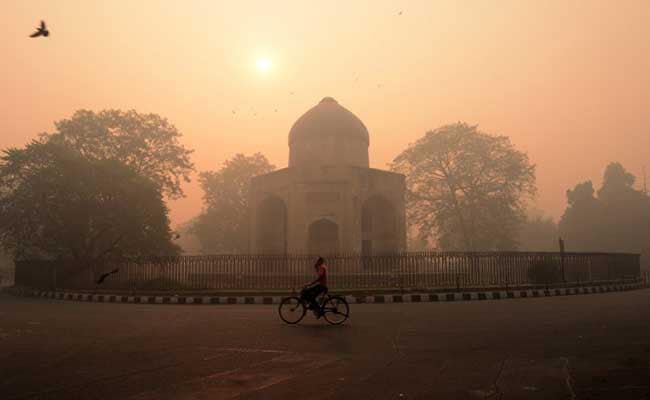
There's a high chance that air quality in the national capital will turn bad today as slowing wind speed loses the ability to dilute and push out pollutants from the city. Tuesday's air quality index was recorded at a "very poor" level of 335 -- bad for those suffering from respiratory issues -- according to the Central Pollution Control Board or CPCB. Delhi has been intermittently seeing heavy smog for the last two months, right from around Diwali, due to a range of pollutants building up in the city from sources such as automobile emissions, road dust, industrial emissions and huge volume of smoke as a result of crop-residue burning on vast swathes of land in neighbouring Punjab and Haryana.
Here's your 10-point cheat sheet to this story
The concentration of pollutants such as particulate matter or PM2.5 will rise till December 29 due to low-velocity wind. "The IMD (India Meteorological Department) has predicted that low winds... and stable atmospheric conditions are likely to cause severe air quality events, particularly in the evening and night till December 29," CPCB's air laboratory chief Dipankar Saha said.
Air pollutants that used to be present higher in the atmosphere are likely to settle toward the surface and mix with ground pollutants such as dust, worsening air quality in Delhi.
The CPCB has asked government agencies to be ready to take emergency measures in case air quality worsens too much around New Year. For example, the Delhi Pollution Control Committee or DPCC and municipal corporations are responsible for taking action against those who are found burning coal and firewood in the open.
According to environmentalists, some of the factors that contribute immensely to worsening air quality in the national capital are badly maintained vehicles that emit visible smoke, large diesel generator sets, crop-residue burning in neighbouring states and urban industrial emissions.
On Tuesday, air quality in Delhi was ranked "very poor" by the CPCB, while it was "severe-plus" in Anand Vihar, Ghaziabad and Noida, meaning people with respiratory issues should not expose themselves to the air outside for a long period.
Earlier this month, the National Green Tribunal dismissed a review by the Arvind Kejriwal government to keep two-wheelers out of the odd-even vehicle rationing plan that has to be implemented when air quality fall below a certain level. The green court said many two-wheelers on Delhi's roads are old and do not conform to air pollution norms.
Under the Graded Response Action Plan, the pollution watchdog called the Environment Pollution (Prevention and Control) Authority has the powers to order municipal bodies to charge four times standard parking tariff to discourage car owners from using their vehicles, among other measures. It was implemented recently in Delhi, but faced a backlash from motorists who argued the parking fee was too high.
Environmentalists and scientists say moving to efficient Euro 6 standard fuel, removing subsidies on diesel, reducing tariff on electric cars and speeding up construction of the east-west corridor so that trucks can circumvent Delhi are urgently needed.
Over the last two years, the Delhi government earned Rs 800 crore by taxing polluting trucks which entered the capital. But of that "environment compensation charge" or cess, less than one crore or 0.12 per cent was spent on fighting air pollution, RTI activist Sanjeev Jain had said last month.
Thirty times smaller than the width of a human hair, the size of the PM2.5 pollutant makes it dangerous for the human body. Another pollutant, PM10, may get trapped in the throat, but PM2.5 is fine enough to pass these natural barriers and enter the lungs and the bloodstream, doctors say.

